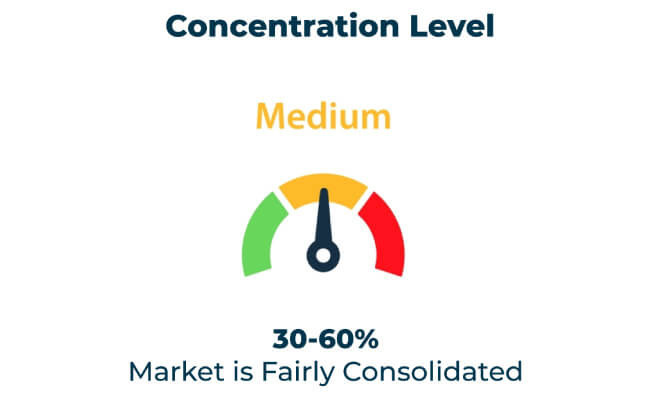The pharmaceutical glass packaging market is undergoing significant growth driven by rising demand for secure, durable, and inert packaging solutions. Glass packaging offers unmatched chemical stability, transparency, and recyclability, making it a preferred choice for pharmaceuticals. By 2035, the market is projected to reach USD 31843.36 million, growing at a compound annual growth rate (CAGR) of 3.9%. Key trends include advancements in borosilicate glass technology, increased adoption of sustainable practices, and rising demand for biologics.
Manufacturers are investing in advanced glass manufacturing technologies, lightweight designs, and enhanced durability to meet evolving industry requirements. Collaboration with pharmaceutical companies ensures that glass packaging solutions align with stringent regulatory and operational standards.
| Attribute | Details |
|---|---|
| Projected Value by 2035 | 31843.36 million |
| CAGR during the period 2025 to 2035 | 3.9% |
Factors Driving Market Growth
The pharmaceutical glass packaging market is expanding due to the growing need for safe and durable packaging solutions. Technological innovations and sustainability trends further accelerate adoption.
Global Market Share & Industry Share (%)
| Category | Market Share (%) |
|---|---|
| Top 3 Players (Schott AG, Gerresheimer, Corning) | 17% |
| Rest of Top 5 Players (Stölzle Glass Group, SGD Pharma) | 09% |
| Next 5 of Top 10 Players | 06% |
Type of Player & Industry Share (%)
| Type of Player | Market Share (%) |
|---|---|
| Top 10 Players | 32% |
| Next 20 Players | 38% |
| Remaining Players | 30% |

Year-on-Year Leaders
Emerging markets in Asia-Pacific, Africa, and South America offer significant growth potential. Affordable and scalable pharmaceutical glass packaging solutions are in high demand in these regions.
In-House vs. Contract Manufacturing
| Region | North America |
|---|---|
| Market Share (%) | 35% |
| Key Drivers | High healthcare expenditure and biologics demand. |
| Region | Europe |
|---|---|
| Market Share (%) | 30% |
| Key Drivers | Strong sustainability initiatives and advanced technology. |
| Region | Asia-Pacific |
|---|---|
| Market Share (%) | 25% |
| Key Drivers | Rapid healthcare expansion and infrastructure development. |
| Region | Other Regions |
|---|---|
| Market Share (%) | 10% |
| Key Drivers | Rising demand for affordable and durable packaging. |
The pharmaceutical glass packaging market will grow through innovations in material science, sustainability efforts, and digital integration. Companies investing in eco-friendly practices, lightweight designs, and smart packaging technologies will lead the market. Automation and AI-driven manufacturing processes will optimize efficiency and reduce costs.
| Tier | Key Companies |
|---|---|
| Tier 1 | Schott AG, Gerresheimer, Corning |
| Tier 2 | Stölzle Glass Group, SGD Pharma |
| Tier 3 | Piramal Glass, Bormioli Pharma, Nipro Corporation |
The pharmaceutical glass packaging market is poised for robust growth, driven by advancements in glass technology, sustainability trends, and increasing demand for biologics and injectables. Companies investing in recyclable materials, lightweight designs, and smart packaging solutions will gain a competitive edge in this evolving market.
Key Definitions
Abbreviations
Research Methodology
This report relies on primary research, secondary data analysis, and market modeling. Insights were validated through industry expert consultations.
The pharmaceutical glass packaging market encompasses advanced, sustainable, and customizable glass solutions for storing and delivering drugs, addressing safety, efficacy, and environmental sustainability.
The market is driven by rising demand for biologics and injectables, advancements in borosilicate glass, and sustainability initiatives.
the market is projected to reach USD 31843.36 million, growing at a compound annual growth rate (CAGR) of 3.9%.
Key players include Schott AG, Gerresheimer, and Corning, known for their innovative and durable glass packaging solutions.
Challenges include high production costs, breakage risks, and stringent regulatory compliance requirements.
Opportunities lie in the growth of biologics, technological advancements in glass manufacturing, and increased demand for sustainable packaging solutions.






Full Research Suite comprises of:
Market outlook & trends analysis
Interviews & case studies
Strategic recommendations
Vendor profiles & capabilities analysis
5-year forecasts
8 regions and 60+ country-level data splits
Market segment data splits
12 months of continuous data updates
DELIVERED AS:
PDF EXCEL ONLINE
Pharmaceutical Manufacturing Equipment Market Forecast and Outlook 2025 to 2035
Pharmaceutical Plastic Bottle Market Forecast and Outlook 2025 to 2035
Pharmaceutical Grade Sodium Carbonate Market Forecast and Outlook 2025 to 2035
Pharmaceutical Grade Sodium Chloride Market Size and Share Forecast Outlook 2025 to 2035
Pharmaceutical Plastic Pots Market Size and Share Forecast Outlook 2025 to 2035
Pharmaceuticals Pouch Market Size and Share Forecast Outlook 2025 to 2035
Pharmaceutical Mini Batch Blender Market Size and Share Forecast Outlook 2025 to 2035
Pharmaceutical Continuous Manufacturing Equipment Market Size and Share Forecast Outlook 2025 to 2035
Pharmaceutical Liquid Prefilters Market Size and Share Forecast Outlook 2025 to 2035
Pharmaceutical Grade P-Toluenesulfonic Acid Market Size and Share Forecast Outlook 2025 to 2035
Pharmaceutical Container Market Size and Share Forecast Outlook 2025 to 2035
Pharmaceutical Sterility Testing Market Size and Share Forecast Outlook 2025 to 2035
Pharmaceuticals Preservative Market Size and Share Forecast Outlook 2025 to 2035
Pharmaceutical Track and Trace Systems Market Size and Share Forecast Outlook 2025 to 2035
Pharmaceutical Vials Market Size and Share Forecast Outlook 2025 to 2035
Pharmaceuticals Machinery Market Size and Share Forecast Outlook 2025 to 2035
Pharmaceutical Logistics Market Size and Share Forecast Outlook 2025 to 2035
Pharmaceutical Lactose Market Analysis - Size, Share, & Forecast Outlook 2025 to 2035
Pharmaceutical Dissolution Testing Services Market Size and Share Forecast Outlook 2025 to 2035
Pharmaceutical Fittings Market Size and Share Forecast Outlook 2025 to 2035

Thank you!
You will receive an email from our Business Development Manager. Please be sure to check your SPAM/JUNK folder too.
Chat With
MaRIA